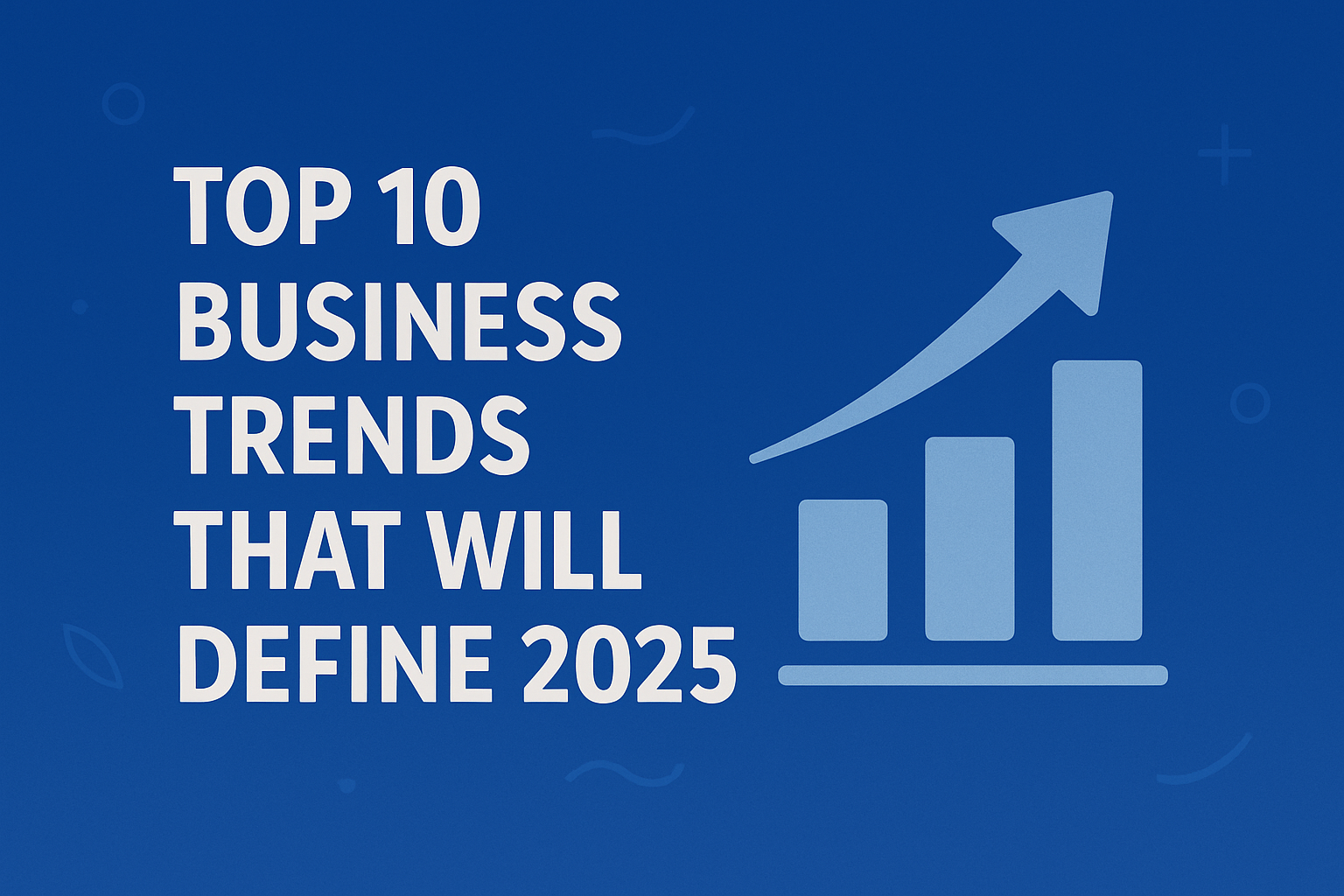Introduction
The business world in 2025 is evolving due to AI, digitalization, sustainability focus, and changing workforce expectations. Companies that understand and adapt to these trends will thrive in the next decade.
1. AI-Powered Business Operations
AI automates routine tasks, improves efficiency, and provides predictive insights. It's increasingly used in customer service, operations, marketing, and product design.
- Automate repetitive tasks: invoicing, reports, customer support tickets.
- Predictive analytics for market trends, sales forecasting, and inventory optimization.
- AI-driven customer service chatbots reduce response times and operational costs.
- Implement AI for quality control, fraud detection, and risk assessment.
2. Remote Work & Hybrid Models
Flexible work setups continue to dominate, balancing in-office presence with remote productivity.
- Define clear remote policies and expectations for communication and output.
- Use cloud collaboration tools like Teams, Slack, Zoom, Asana, Trello.
- Offer flexible schedules to enhance employee satisfaction and retention.
- Encourage virtual team-building and wellness initiatives for engagement.
3. E-commerce & Direct-to-Consumer (DTC) Boom
Online shopping and DTC strategies drive customer engagement, faster delivery, and brand loyalty.
- Mobile-optimized platforms with fast, secure checkout experiences.
- Leverage customer data for personalized offers and dynamic recommendations.
- DTC strengthens brand-consumer relationships and community building.
- Integrate AR/VR experiences for product demos and enhanced online engagement.
4. Sustainability as Core Strategy
Eco-conscious operations appeal to socially aware customers and offer long-term competitive advantage.
- Green supply chains, recyclable packaging, energy-efficient processes.
- Set measurable sustainability KPIs: carbon footprint, water usage, waste reduction.
- Transparency through sustainability reporting builds customer trust.
- Partner with NGOs and environmental programs for social responsibility initiatives.
5. Rise of the Subscription Economy
Subscription models generate predictable revenue and convenience for customers.
- Offer tiered subscription plans with benefits for different user segments.
- Use loyalty programs and engagement campaigns to reduce churn.
- Examples include SaaS products, subscription boxes, streaming services.
- Combine analytics and AI to optimize pricing and retention strategies.
6. Digital Payment Solutions & Cryptocurrency
Digital wallets, contactless payments, and cryptocurrency adoption accelerate global commerce.
- Support multiple digital payment options: cards, PayPal, Apple Pay, crypto.
- Ensure fast, secure, and seamless transactions with encryption and compliance.
- Monitor crypto volatility and integrate stablecoins for predictable pricing.
- Adopt blockchain-based solutions for transparent supply chains and payments.
7. Personalized Customer Experiences with Big Data
Data-driven personalization enhances marketing, product recommendations, and overall customer experience.
- Analyze browsing and purchase behavior to predict preferences.
- AI personalization engines offer dynamic content, offers, and recommendations.
- Segment customers by behavior, demographics, and lifecycle stage.
- Improve loyalty and conversion rates using targeted campaigns.
8. Cybersecurity & Data Privacy
As digital transformation grows, protecting data and privacy becomes essential.
- Implement strong encryption, multi-factor authentication, and regular audits.
- Train employees on phishing, malware, and safe data practices.
- Comply with global data protection laws (GDPR, CCPA).
- Use AI for threat detection, anomaly monitoring, and incident response.
9. Global Talent & Freelance Economy
Freelancing and gig work expand opportunities for global talent access.
- Hire freelancers via platforms like Upwork, Fiverr, Toptal for specialized tasks.
- Establish clear communication, reporting, and project management protocols.
- Flexibly scale teams based on project demands without long-term commitments.
- Global collaboration tools enable seamless work across time zones.
10. Purpose-Driven Brands
Consumers value brands with ethical, social, or environmental missions.
- Integrate purpose into brand strategy and operations.
- Communicate authentically about social responsibility initiatives.
- Examples: Ben & Jerry’s, Patagonia, TOMS align business with purpose.
- Build trust, loyalty, and long-term brand equity through mission alignment.
Key Points Summary
- AI drives automation, predictive analytics, and smarter operations.
- Remote and hybrid work models enhance productivity and satisfaction.
- DTC & e-commerce growth enables personalized customer experiences.
- Sustainability is a core strategy for competitive advantage.
- Subscription economy ensures recurring revenue and customer retention.
- Digital payments and crypto adoption streamline global transactions.
- Big data personalization improves marketing and loyalty.
- Cybersecurity & data privacy protect business and customer trust.
- Global freelance talent expands capabilities and flexibility.
- Purpose-driven brands strengthen customer loyalty and social impact.
Final Thoughts
2025 demands innovation, sustainability, and digital transformation. Companies adapting to these trends will remain competitive, attract top talent, and build long-term growth.
